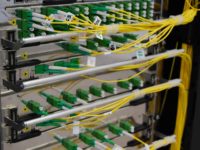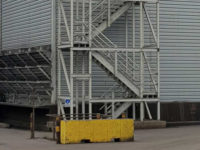Project Delivery Method: Design-bid-build (DBB)
Owner Team: Financial office building manager, owner’s representative consultant, facility manager (in-house staff), and third-party commissioning (Cx) agent
Project Delivery Team: HVAC consulting firm’s project manager and design engineer and electrical, plumbing, and structural engineer consultants
HVAC Project Delivery Team: HVAC contractor (prime contractor) awarded the project based on contract document bid. Other team members are the DBB HVAC job superintendent; mechanical-electrical coordinator; cooling tower manufacturer technician; rigging subcontractor; plumbing and electrical subcontractors; and subcontractor testing, adjusting, and balancing (TAB) technician.
2019 ASHRAE Handbook HVAC Application: Commercial and Public Buildings, Chapter 3, and Data Center and Telecommunication Facilities, Chapter 20
2020 ASHRAE Handbook HVAC Systems and Equipment: Condenser Water Systems, Chapter 14, and Cooling Towers, Chapter 40
Project Type: Infrastructure (central process cooling condenser water system cooling) and facility deferred maintenance master plan implementation
References: 2019 ASHRAE Handbook — HVAC Applications, 2020 ASHRAE Handbook — HVAC Systems and Equipment, and the codes and standards located at the end of each ASHRAE Handbook for additional reference
Other References: Cooling Technology Institute (cooling towers); ASHRAE Guideline 22, Instrumentation for Monitoring Central Chilled Water Plant Efficiency; ASHRAE Fundamentals of Design and Control of Central Chilled-Water Plants; ASHRAE Standard 202 (Commissioning Process for Buildings and Systems), and Facility Condition Index (a standard facility condition benchmark)
DESIGN INTENT DOCUMENT (DID)
HVAC Design Intent:
- The HVAC system selection and design intent is based on the processed outlined in ASHRAE Handbook 2020, Chapter 1, HVAC System Analysis and Selection, and include the following:
- Owner building program goals and additional goals.
- System constraints and constructability constraints.
- The finalized system selection shall consist of a replacement cooling tower and standby cooling tower to serve financial data center.
- Specialized systems shall include an existing plate and frame waterside heat exchanger located in the central chiller plant.
- Automatic controls shall include temperature controls, furnished controls, BACnet interface, internet interface, existing building automation system (BAS) interface, and existing computerized maintenance management software (CMMS) system interface.
- Program and Project Goals:
- Functional goals: (refer to Chapter 1, 2020 Handbook).
- Budget goals: first cost.
- Timeline goal(s): four-month construction period.
- Management goals: property management and in-house mechanical and electrical services and outside service contract for cooling towers and chemical treatment.
- Available Utilities:
- Electrical power, emergency power, central plant condenser process water system.
- Existing waterside economizer system.
DESIGN CRITERIA DOCUMENT
- The HVAC design criteria shall be in sync with the project delivery method and owner’s project requirements.
- A construction phased cooling tower and standby tower replacement schedule based on the facility’s deferred maintenance replacement plan.
- The existing cooling towers shall remain in operation until the change-over to the new cooling tower installation.
- Rebalancing of the condenser water system for condenser water flow, standby flow, and waterside economizer flow sequences.
- The design team shall provide contract drawings and specifications coordinated with equipment weight; electric data, including the emergency power requirements and plumbing criteria, to solicit general contractor bids.
- Field fabrication drawings shall become the record drawings at closeout.
- New cooling tower units shall be furnished with operation and maintenance (O&M) manuals.
- The equipment manufacturer’s preventive maintenance work orders shall be uploaded to the existing O&M staff’s computerized maintenance management software (CMMS) system.
- The D-B-B contractor shall provide system training to the building’s O&M staff regarding the cooling towers and the 24/7, year-round condenser water system and electrical normal and emergency power systems.





